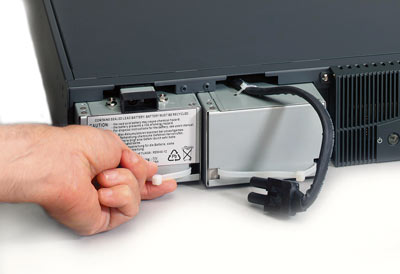
How to replace the AC battery
Content
The battery in the air conditioning system is defective if it rattles inside or the air conditioning system smells moldy.
Replacing any air conditioner component requires refurbishment, internal drying, leak testing and system recharge. Restoration is the first step in the maintenance of all components without exception. After replacing a failed component, the system must be placed under vacuum to remove acid-causing moisture from the system and then recharge the system with the refrigerant specified for your vehicle.
A common symptom of a bad battery is rattling noises when one of its internal components loosens or a noticeable coolant leak occurs. You may also notice a musty smell, as moisture builds up when the battery breaks.
There are several different types of equipment for servicing the air conditioning system. The system design may differ from that described in this article, but they all restore, evacuate and recharge the air conditioning system.
Part 1 of 5: Recovery of refrigerant from the system
Required material
- refrigerant recovery machine
Step 1: Connect the refrigerant recovery unit. Connect the red hose from the high pressure side to the smaller service port and the blue connector from the low side to the large service port.
- Functions: There are several different designs of service hose connectors. Whichever one you use, make sure it's pushing against the service port schrader valve on the vehicle. If it doesn't press the Schrader valve, you won't be able to service the A/C system.
Step 2. Turn on the air conditioner recovery machine and start the recovery.. Refer to the user manual for specific instructions on the recovery system.
This will depend on the system you have.
Step 3: Measure the amount of oil removed from the system. You will need to fill the system with the same amount of oil removed from the system.
This will be between one and four ounces, but depends on the size of the system.
Step 4: Detach the recovery vehicle from the vehicle.. Be sure to follow the procedure outlined by the manufacturer of the recovery system you are using.
Part 2 of 5: Removing the Battery
Necessary materials
- ratchet
- Ceiling rosette
Step 1: Remove the lines connecting the battery to the rest of the A/C system.. You want to remove the lines before removing the battery bracket.
The bracket will give you leverage when removing lines.
Step 2: Remove the battery from the bracket and vehicle.. Often the lines get stuck in the battery.
If so, use an aerosol penetrant and a twist action to free the battery from the lines.
Step 3: Remove the old rubber o-rings from the pipes.. They will need to be replaced with new ones.
Part 3 of 5: Installing the Battery
Necessary materials
- O-ring battery
- Large spanners
- ratchet
- Ceiling rosette
Step 1: Install new rubber o-rings on the battery lines.. Be sure to lubricate the new O-rings so that they do not break when the accumulator is installed.
Applying lubricant also helps prevent the O-ring from drying out, shrinking, and cracking over time.
Step 2: Install the battery and bracket on the car.. Guide the straps into the battery and start tying the threads before securing the battery.
Attaching the battery before threading may cause the thread to twist.
Step 3: Fix the battery to the car with the battery bracket.. Be sure to secure the brace before tightening the straps for the last time.
As with the bracket preventing you from starting the carving, tightening the lines will prevent you from aligning the bracket bolt or bolts with the car.
Step 4: Tighten the lines that connect to the battery. Once the bracket has been secured, you can tighten the battery lines one last time.
Part 4 of 5: Remove all moisture from the system
Necessary materials
- oil injector
- Oil PAG
- Vacuum pump
Step 1: Vacuum the system. Connect a vacuum pump to the high and low pressure connectors on the vehicle and begin removing moisture from the A/C system.
Placing the system in a vacuum causes moisture to evaporate from the system. If moisture remains in the system, it will react with the refrigerant and create an acid that will corrode all the air conditioning system components inside, eventually causing other components to leak and fail.
Step 2: Let the vacuum pump run for at least five minutes.. Most manufacturers offer an evacuation time of at least an hour.
Sometimes this is necessary, but most often five minutes is enough. It depends on how long the system has been open to the atmosphere and how humid the atmosphere is in your area.
Step 3: Leave the system under vacuum for five minutes.. Turn off the vacuum pump and wait five minutes.
This is a check for leaks in the system. If the vacuum in the systems is released, you have a leak in the system.
- Functions: It is normal for the system to pump a little. If it loses more than 10 percent of its lowest vacuum, you need to find the leak and fix it.
Step 4: Remove the vacuum pump from the A/C system.. Disconnect the high and low connection from your vehicle's air conditioning system.
Step 5: Inject oil into the system using an oil injector.. Connect the nozzle to the connections on the low pressure side.
Introduce the same amount of oil into the system as was recovered during the refrigerant recovery process.
Part 5 of 5. Charge the air conditioning system
Necessary materials
- A/C manifold sensors
- Refrigerant R 134a
- refrigerant recovery machine
- Refrigerant scale
Step 1: Connect the manifold gauges to the A/C system.. Connect the high and low pressure side lines to your vehicle's service ports and the yellow line to the supply tank.
Step 2: Place the storage tank on the scale.. Place the supply tank on the scale and open the valve at the top of the tank.
Step 3: Charge the system with refrigerant. Open the high and low pressure valves and let the refrigerant enter the system.
Attention: Charging the A/C system requires the supply reservoir to be at a higher pressure than the system you are charging. If there is not enough refrigerant in the system after the system reaches equilibrium, you will need to start the car and use the A/C compressor to create a lower pressure that will allow more refrigerant to enter the system.
A warning: It is vitally important to close the valve on the high pressure side. The air conditioning system builds up enough pressure to potentially rupture the storage tank. You will finish filling the system through the valve on the low pressure side.
Step 4: Get in the car and check the temperature through the vents.. Ideally, you want a thermometer to check the temperature of the air coming out of the vents.
The rule of thumb is that the temperature should be thirty to forty degrees below ambient temperature.
Replacing the air conditioner battery is essential if you want to have a properly functioning air conditioning system and a pleasant driving experience. If you are not completely sure about the above steps, entrust the replacement of the air conditioner battery to one of AvtoTachki certified specialists.

